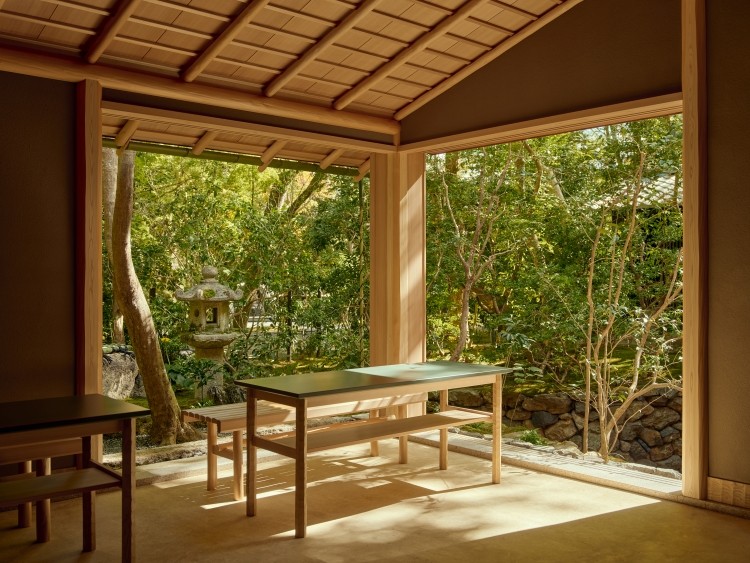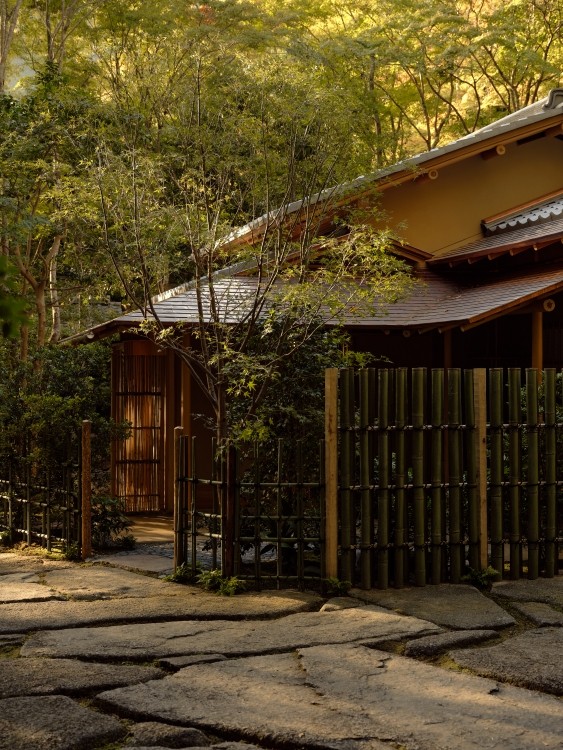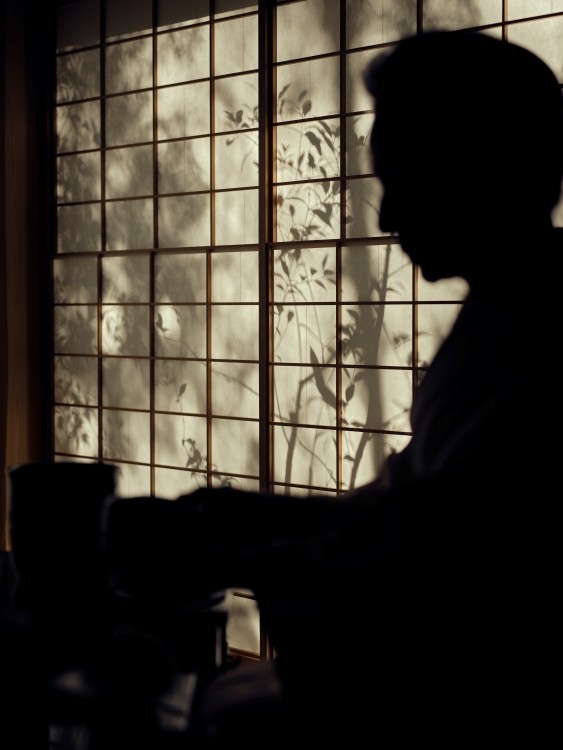Aman Kyoto, located in the forested hills of Kyoto’s Kita Ward, has unveiled Senkutsu, a new tea house that distills the spirit of the Japanese tea ceremony into an intimate architectural retreat. The name was bestowed by Zabōsai Sōshitsu XVI, Grand Master of the Urasenke tea tradition. Tucked beyond a moss-lined stone path where the forest grows increasingly silent and profound, Senkutsu embodies Aman Kyoto’s longstanding reverence for place and the contemplative depth of Japanese culture.
 Courtesy of AMAN KYOTO
Courtesy of AMAN KYOTO
Comprising a four-mat koma tea room, a ryūrei-style seating area overlooking a serene deep pool, and a mizuya that connects the two spaces, Senkutsu invites in-house guests to enjoy not only authentic tea ceremonies but also workshops with Japanese painters, seasonal wagashi-making experiences, and other cultural programs. “We hope guests will feel embraced by the quiet beauty of sukiya architecture and experience the spirit of hospitality at the heart of tea culture,” says General Manager Yasuo Mizobuchi.
 Courtesy of AMAN KYOTO
Courtesy of AMAN KYOTO
The Precision of Sukiya Craftsmanship—Where Materials and Light Intertwine
The tea house was designed by Sen Atelier, known for its work on numerous Urasenke tea spaces including Konnichian. Construction was carried out by Nakamura Sotoji Komuten, masters of traditional sukiya carpentry. Kyoto’s iconic materials—such as Kitayama cedar and earthen walls crafted from the soil of Takagamine—breathe quietly throughout the space, forming an architecture that resonates gently with the surrounding nature.
Lead architect Norio Toyama notes, “We sought to honor traditional aesthetics while allowing the structure to blend naturally into Aman Kyoto’s forest,” describing a space shaped by the harmony of light, shadow, wind, and materiality.
 Courtesy of AMAN KYOTO
Courtesy of AMAN KYOTO
The Four-Mat Koma — A Condensed Universe of Stillness
Passing through the low nijiriguchi entrance, guests enter a four-and-a-half-mat koma, where profound quietude is contained within a compact space. A hanging scroll in the alcove, the rising steam of the kettle, the soft glow through shōji screens, and the scent of tatami—each element is refined to its essence, allowing the singular, unrepeatable moment of the tea ceremony to emerge with clarity.
 Courtesy of AMAN KYOTO
Courtesy of AMAN KYOTO
The Ryūrei Tea Space Overlooking the Deep Pool — A Dialogue Between Tradition and Modernity
The ryūrei area, facing the property’s deep reflective pool, is defined by a wall-wide window through which the surrounding greenery and water seem to stream directly into the room. The space can be enjoyed while wearing shoes, offering international guests a more approachable way to engage with tea culture. Here, traditional gestures and Aman Kyoto’s contemporary sensibility meet in a serene and fluid atmosphere.
 Courtesy of AMAN KYOTO
Courtesy of AMAN KYOTO
A New Cultural Nexus Within Aman Kyoto’s Forest Garden
While Senkutsu is currently reserved for staying guests, seasonal tea gatherings for the general public are planned beginning in 2026. As a place where culture, nature, and architecture interplay, Senkutsu is poised to become a new cultural cornerstone for Aman Kyoto.
In this quiet “otherworldly tea house” that breathes within the forest garden, the Japanese aesthetic spirit and Aman’s refined hospitality will continue to intersect, cultivating ever-richer experiences in the years to come.
Aman Kyoto
Opened on November 1, 2019, Aman Kyoto is a resort nestled in a secluded forest garden at the foot of the Takamine Sanzan mountain range, stretching from Mount Hidari Daimonji in the north of Kyoto. The spacious site of approximately 24,000 square meters is dotted with an arrival building, a living building (all-day dining), a restaurant building (Japanese cuisine), a spa building with natural hot springs, an accommodation building, and a teahouse, all of which blend seamlessly into the forest garden. The secluded Aman Kyoto’s modern architecture and the landscape created by the dignified garden, which has stood the test of time, offer a stay that allows you to experience the profound charm of this ancient capital.
編集部

AloJapan.com